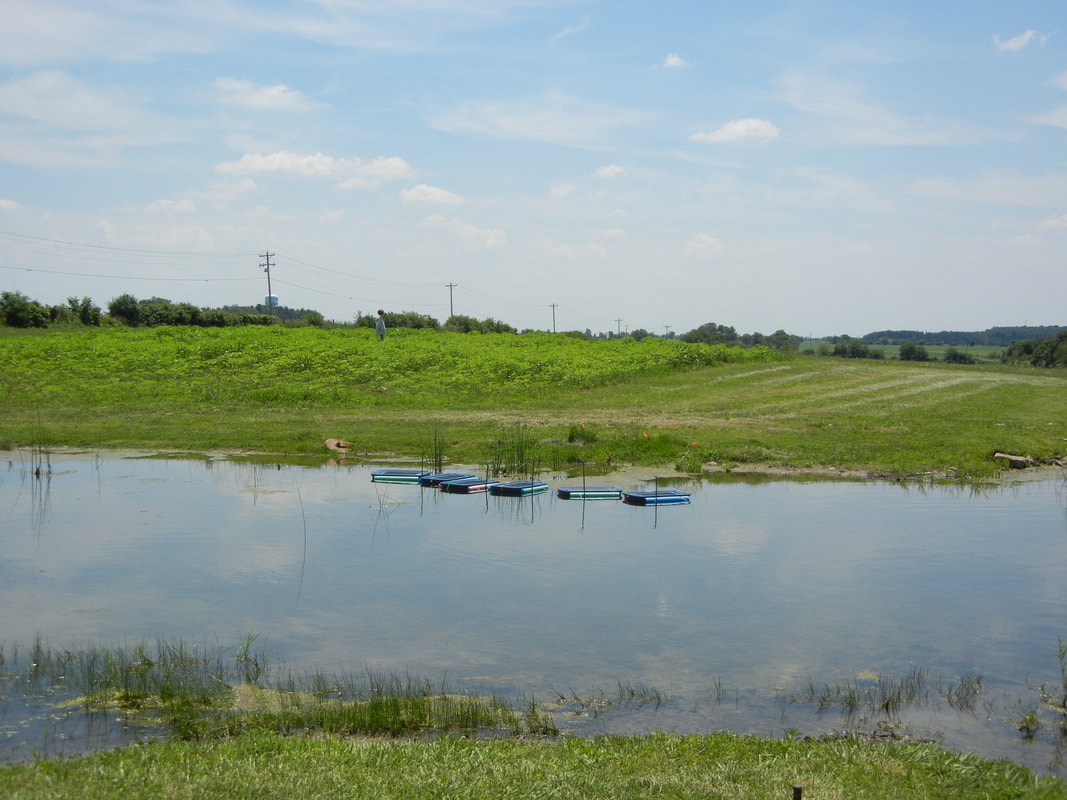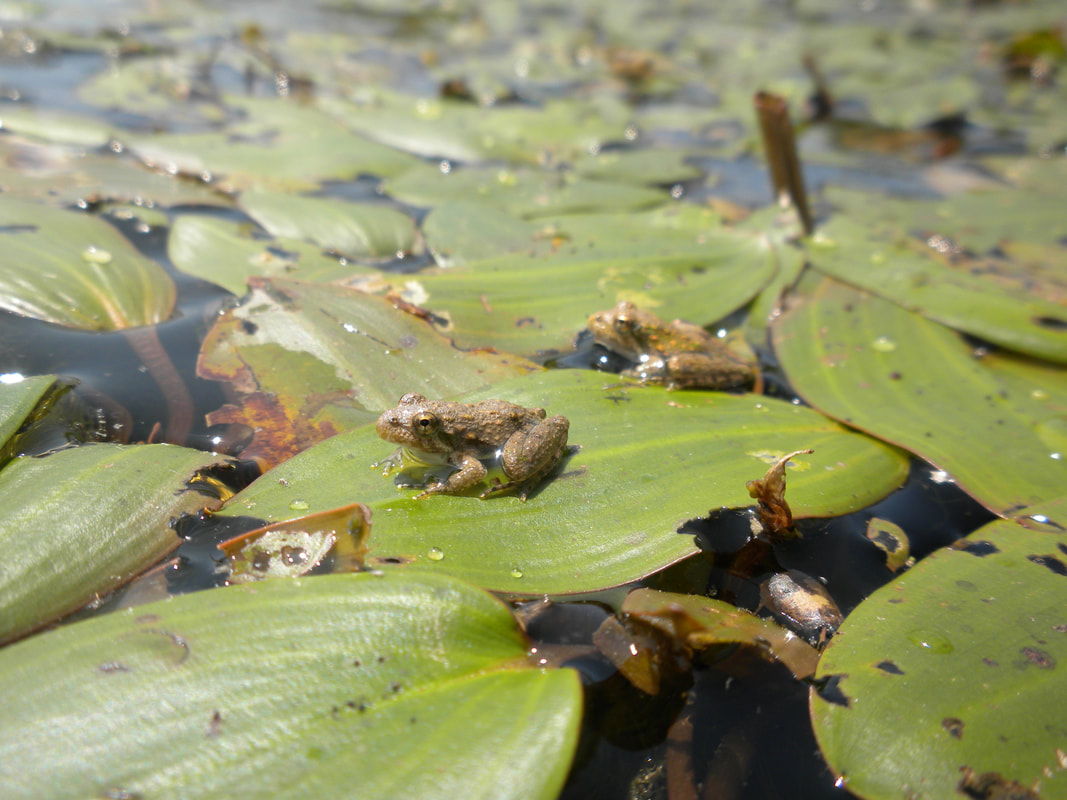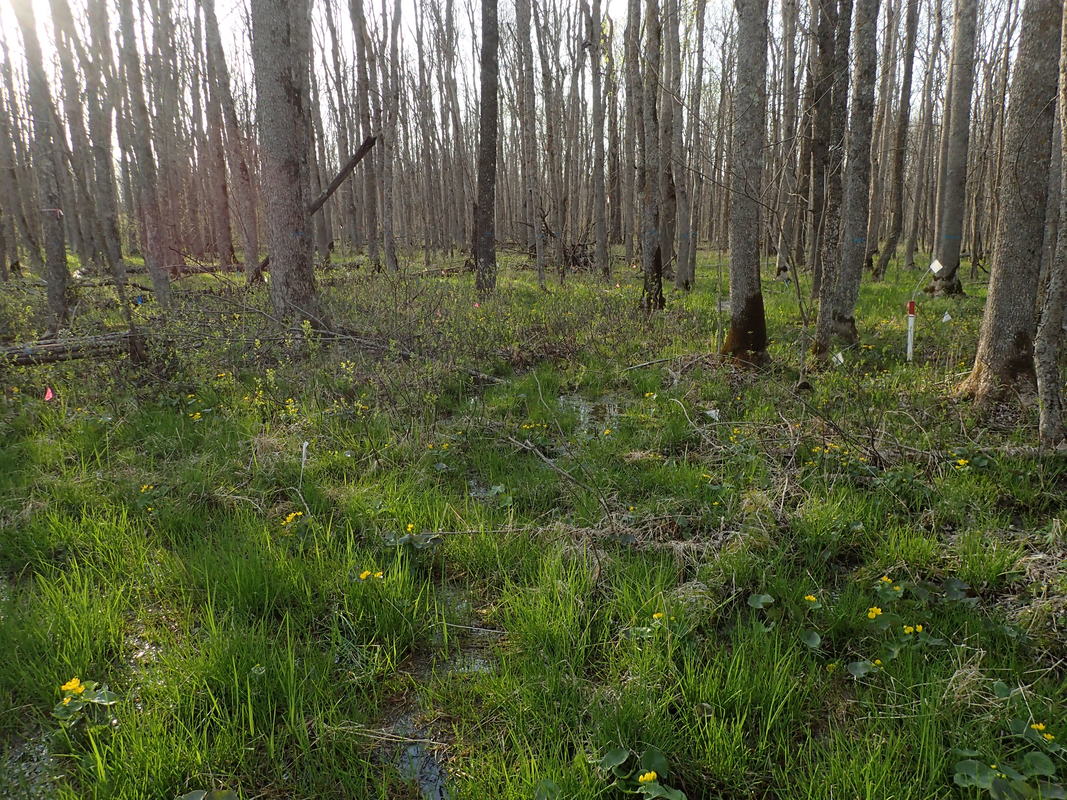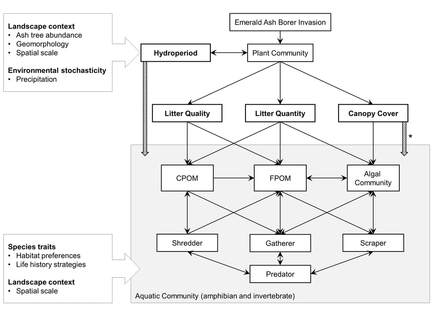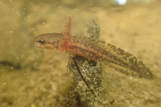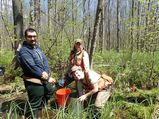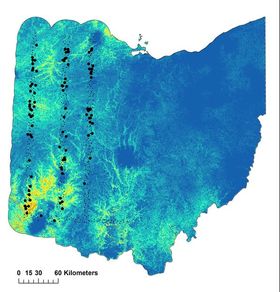Current Projects:
|
|
Changing Leaf Litter Affects Ecosystem Function: As black ash die, forests will regress to sedge and alder dominated swamps. Alternatively, forest managers could plant alternative canopy trees as ecological replacements (assisted replacement) to maintain forest structure and function. Regardless, changes in leaf litter could alter nutrient flux. We used a caddisfly bio-assay to asses how changes in leaf litter type could affect shredder invertebrates; we also examined decomposition rates of differ species.
Response of Aquatic Community to the Loss of Ash: As ash wetlands regress to sedge-dominated wetlands, the composition of the aquatic community could change. We are surveying amphibians and aquatic invertebrates within control and clear-cut black ash wetlands on the Chippewa National Forest. The Importance of Black Ash Wetlands for Amphibian Communities in Northern Minnesota: Black ash wetlands are the main type of forested wetland in northern Minnesota. Our goal is to determine which amphibian species utilize these wetlands and the relative importance of ash wetlands to amphibians overall. We are surveying adult frogs in ash and non-ash emergent wetlands as well as for larval amphibians in different types of ash wetlands (e.g., large flat swamps vs small depressional wetlands) across northern Minnesota. |
Effects of Land Use on Species Distributions
|
Effects of Habitat Quality on Amphibian Larvae
|
